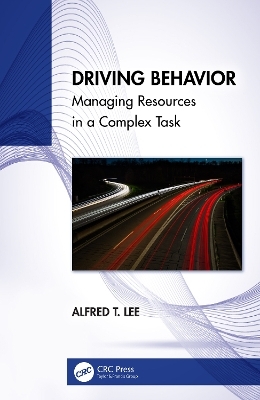
Driving Behavior
CRC Press (Verlag)
978-1-032-43180-2 (ISBN)
In the U.S., drivers over the age of 65 now account for nearly 20% of licensed drivers. This number will increase by 25% to nearly 70 million by the year 2030. Some of these older drivers may not be capable of operating their vehicles safely in all conditions. The book investigates the key aspects of driving tasks and their relation to the sensory, perceptual, motor, and cognitive processes. Effects on driving performance, including aging, are described with a view toward improving future vehicle and road design as well as driver training and evaluation.
This title:
Presents a comprehensive, quantitative analysis of human physical and mental processes to driving behavior.
Showcases recent review and analysis of driver, vehicle, and road environment design factors.
Discusses the fundamentals of driving behavior in vehicle control and guidance, collision avoidance, and hazard perception.
Examines the effects of design issues on vehicles and road environments.
Highlights specific quantifiable attributes of physical and mental functions related to driving approaches.
Written for professionals in diverse fields including ergonomics, health and safety, human factors, transportation engineering, and automotive engineering, this book is the essential guide to driving practices and habits. Its appeal will extend to those involved in vehicle design, roadway environments, driver training, and regulatory agencies.
Alfred T. Lee has been involved in the conduct of research in human–systems integration for more than 40 years. His principal research focus has been developing an understanding of how human capabilities and limitations affect the way in which complex systems function. This understanding can be used to develop designs that maximize the influence of those attributes of the human operator that can enhance the efficacy of system operation while minimizing the influence of those aspects that do not. This is particularly important for system safety as designs that do not properly integrate the human operator inevitably reduce operational safety.
1. Sensation, Perception and Cognition in Driving. 2. Vehicle Speed Control and Guidance. 3. Perception of Distance, Time-to-Collision and Collision Avoidance. 4. Hazard and Risk Perception. 5. Multitasking and Attention. 6. Aging and Driving Behavior. 7. Resource Management and Driving Behavior.
| Erscheinungsdatum | 31.10.2023 |
|---|---|
| Zusatzinfo | 1 Tables, black and white; 4 Line drawings, black and white; 4 Illustrations, black and white |
| Verlagsort | London |
| Sprache | englisch |
| Maße | 156 x 234 mm |
| Gewicht | 512 g |
| Themenwelt | Kunst / Musik / Theater ► Design / Innenarchitektur / Mode |
| Naturwissenschaften ► Chemie ► Technische Chemie | |
| Technik ► Bauwesen | |
| Technik ► Umwelttechnik / Biotechnologie | |
| ISBN-10 | 1-032-43180-6 / 1032431806 |
| ISBN-13 | 978-1-032-43180-2 / 9781032431802 |
| Zustand | Neuware |
| Informationen gemäß Produktsicherheitsverordnung (GPSR) | |
| Haben Sie eine Frage zum Produkt? |
aus dem Bereich


